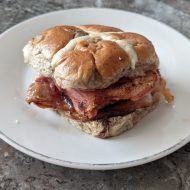A week in which I’m probably going to walk the dog more than write.
Monday 2020/06/15
Fixed a few bugs in some visualisation code I’ve been toying with on and off for several years. It can actually show the three projections of a volumetric data file now. Win. Now to re-work it to it’s possible to add features. This means it’ll be broken for the foreseeable future.
Walked the dog twice.
Saw a squashed stag beetle on the way home from the second walk, all the years I’ve looked for stag beetles and the only one I’ve ever seen was 20m from my front door and squashed almost flat.
Tuesday 2020/06/16
Lousy night of sleep. Too hot & too humid. Awake at 5-ish, up at 7.
Writing this. Going to take the dog out later if it’s not raining. Took the dog over to Crouch End to visit M and go for a long walk. My first trip on a train under the new face covering rules. I made some notes:
Walking to the station : 16 masks out of >50 people
Three men on the tube with no masks – totally brazen about it. One looks like he wants a fight about it. Everyone gave them distance. Approx 4 people per 1/3 of tube carriage.
Overground from Barking, all ok to start. One fucked up guy at station before Walthamstow, ranting. Jewish lady no mask, kids with her all masked ok. Another woman wearing a mask on her chin.
We walked the parkland walk to Highgate, got takeaway Tea and walked back though the woods and playing fields to CE. Fish and chips eaten socially distanced on the green. Tea. Home.
My mask notes for the return journey:
Overground much busier, only roughly every other seat occupied. Young lady diagonally opposite me with no mask and being very blatant about it – grinning as she looks around as people get on.
District line – similar, less busy. Two young men with no masks got on together and moved to opposite end of carriage.
Despite repeated announcements on the trains, there were still people ignoring the request for face coverings, perhaps there were genuine reasons for not wearing, but I’ll never know. At least three of the people not wearing masks seemed to be doing to so make a point. No one else said anything to them, will be interesting to see if this holds when the trains a busier.
Wednesday 2020/06/17
Total waste of a day really. Almost no sleep, so really didn’t get much done at all.
Walked the dog somewhere I was sure I hadn’t been before, but saw something that made me think I had. It’s hard to second guess yourself when the first guess was 25+ years ago and you were not entirely sure back then.
Thursday 2020/06/18
A meeting on MS Teams about our impact case statement for the REF 2020 return, the reviewer hadn’t read the draft we sent, so the meeting started a bit pointless as he suggested things already addressed in the draft, we puled it together in the end and got some useful advice.
Still not sure about a return to the lab date yet.
Handlebar-post-thing extender arrive for the bike, fitted it, but have several bits left over including two very long screws that seem to go nowhere. Took the bike for a ride, much nicer now.
Friday 2020/06/19
Pottering on some code today. Should have been going on holiday.
Saturday 2020/06/20
Longest day of the year.
I’m planning to cycle to work for a few months or longer depending on transport situation and the possibility of second- and third waves. Last time I cycled to work was well over a decade ago and the journey involves part of the A13, until I can switch to the Greenway at Beckton.
The ride to Beckton was much nicer with proper cycle paths segregated from the road. Exactly 30 min from home to the start of the Greenway.
I also built an oscillator.
Sunday 2020/06/20
A day spent tinkering with code and the oscillator. Rebuilt it to be less messy and more stable.
Took the dog for a long walk.

